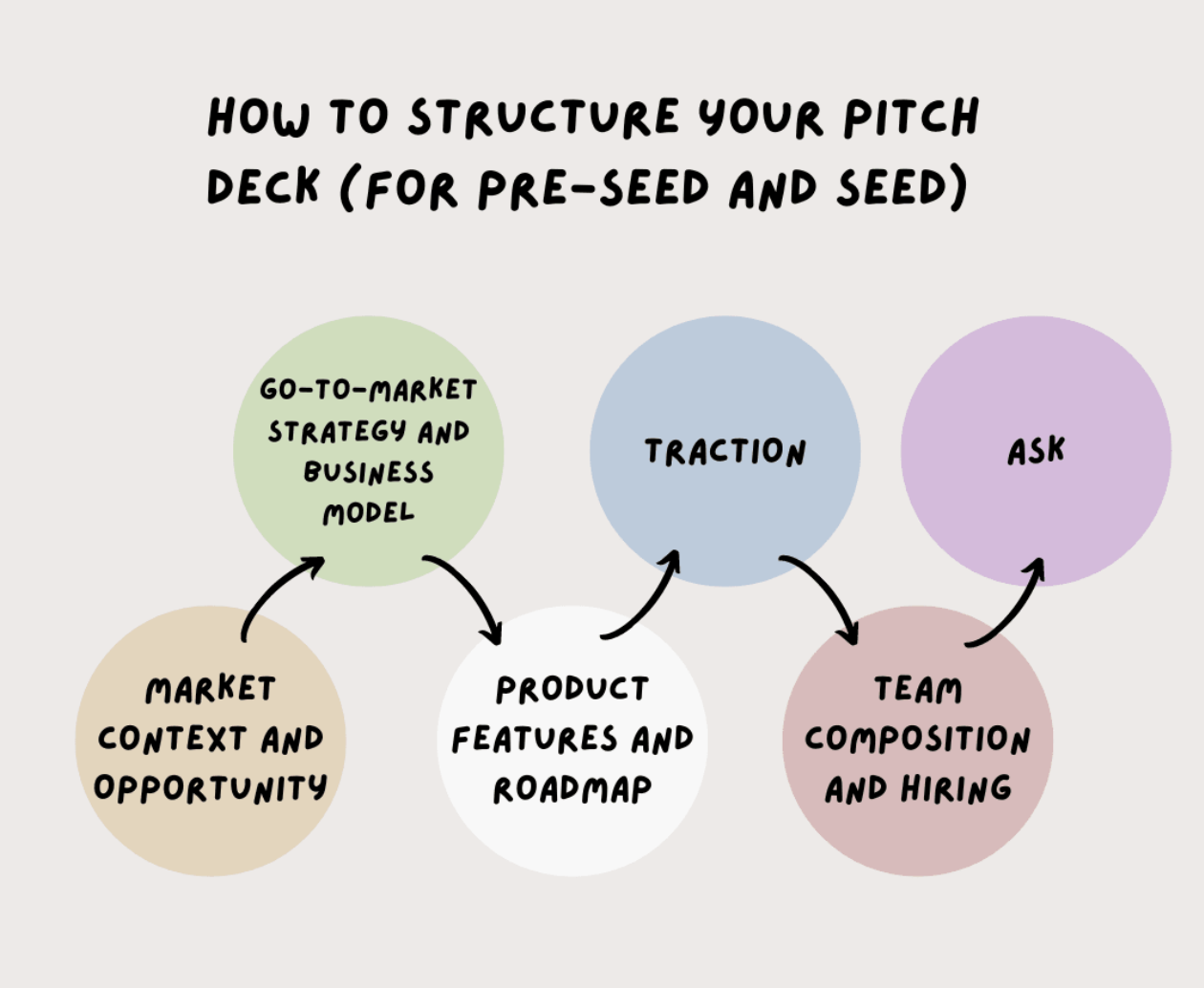The Art of Crafting Your Startup's Story
26.06.2023

Over the last few years in Venture, SaaS has stood for Storytelling as a Service.
Numerous founders were able to raise ludicrous sums of money off the back of being an incredible storyteller. Supposed crypto 'visionaries' and now AI 'savants' all project grandeur versions of what the future looks like and in response, investors willingly take out their chequebooks and ask them how much they want.
This is all due to large downstream investors moving from public to private markets, meaning that early investors were not left holding the bag for as long as they were used to.
The art of fundraising is an emotional one. You need to be able to tug on the heartstrings of the investors on the other side of the table. You have to be able to eloquently convey your vision and make them feel like they're missing out if they don't invest in this current round.
One potential pathway to raising money easily is to come through with a stacked resume. Ex-Paypal/Facebook/Canva/[Insert massive unicorn here] employees are always in high demand and typically attract the largest pre-seed and seed cheques. But what do you do if you aren't from a prestigious background? How do you tell your story and build credibility with VCs who can be incredibly fickle with their capital and time?
The Big Picture
Before you even think about starting to talk to investors, you need to think about what your big vision dream future looks like. Now, I don't mean you should recreate a Jetsons episode with talking robots and flying cars (unless of course, you are building either of those things!). But rather, think carefully about what your overall 20 - 30 year goal is. You want a goal that is both audacious but also believable. That might sound a bit contradicting but stay with me.
Mel from Canva had a very audacious goal in her first pitch deck. Her vision was "To replace the Microsoft Suite as the world's dominant publishing platform". That's an audacious goal for 2011 when Microsoft had a 94% share of the desktop productivity software market.
And to many investors, that wasn't a believable goal. Mel had to do 100s of investor meetings before she was able to raise her seed round. But, if we're smart about how we communicate our audacious goal, you won't have to go through the same pain.
To make a goal believable you have to break down the journey to getting there. As a result, as the founder, the onus is on you to be able to illustrate what your future looks like, but also the path to getting there in palatable and logical jumps.
Sticking to the Canva example, Mel chose design as the first vertical to target due to her close proximity to the subject matter.
Now, it's hard to say whether she expected to have so much success within this one vertical, but much of Canva's journey to date has been democratising design. It's only recently that they've expanded horizontally to start tackling the other Microsoft verticals with their recent product releases of Docs.
Whilst Mel's path maybe took a different journey than she intended, she had some clue as to what steps to take initially and how to position the company so that her end goal seems more reasonable.
That's great for Mel, but how do you do this practically?
First, let's start by working with the tailwinds in your industry.
Write down a list of all the tailwinds that are impacting your chosen market
Categorise each of these as High, Medium or Low with regard to the magnitude of their impact on the market
Also, categorise them in terms of importance to your startup
Now, try and hypothesise the following: "What would the world look like in 10-20 years’ time once those tailwinds have eventuated? Will new tailwinds emerge from existing ones? What could these Tailwinds be?"
The material from the process above won't directly make it into a pitch deck but it will help you think bigger and with more ambition. This enthusiasm and sense of scale will filter through as you start pitching your companies to VCs.
Now, let's talk about the headwinds that might hold your startup back.
In life, there are known unknowns and unknown unknowns.
Known unknowns are things that you know that you don't know and hope you'll be able to figure out along the journey. Maybe a specific feature isn't as useful as you think it is, or sales cycles are longer than you expect.
Unknown unknowns are things that you are completely unaware of. These could come in the form of unexpected technological shifts that render your product obsolete (similar to what AI is doing to incumbent tools), or it could be an unexpected change in regulation.
Investors are looking for savvy operators. They want to know that you have thought about all the possibilities of where a startup could fail, well in advance of themselves.
What headwinds currently exist for your business and the market that you're operating in?
How are incumbents positioned relative to your business?
Will incumbents notice or care about what you're building? And what happens once they start replicating your product? How will you deal with added competition?
What are the incentives in front of them to keep you out of business?
What are the existential threats to your business?
These are just some of the questions you should ask yourself, and mentally prepare yourself to answer during the DD process. If you have well-thought-out and reasonable answers, you'll be able to impress VCs early and come across as a self-aware founder. However, the key here is that the answers need to be reasonable. I've been in numerous calls where the founder trashes their competition, or claims that they're right and the market is wrong, but as Keynes said “Markets can stay irrational longer than you can stay solvent."
Read the full article here https://substack.com/notes/post/p-118961434
Numerous founders were able to raise ludicrous sums of money off the back of being an incredible storyteller. Supposed crypto 'visionaries' and now AI 'savants' all project grandeur versions of what the future looks like and in response, investors willingly take out their chequebooks and ask them how much they want.
This is all due to large downstream investors moving from public to private markets, meaning that early investors were not left holding the bag for as long as they were used to.
The art of fundraising is an emotional one. You need to be able to tug on the heartstrings of the investors on the other side of the table. You have to be able to eloquently convey your vision and make them feel like they're missing out if they don't invest in this current round.
One potential pathway to raising money easily is to come through with a stacked resume. Ex-Paypal/Facebook/Canva/[Insert massive unicorn here] employees are always in high demand and typically attract the largest pre-seed and seed cheques. But what do you do if you aren't from a prestigious background? How do you tell your story and build credibility with VCs who can be incredibly fickle with their capital and time?
The Big Picture
Before you even think about starting to talk to investors, you need to think about what your big vision dream future looks like. Now, I don't mean you should recreate a Jetsons episode with talking robots and flying cars (unless of course, you are building either of those things!). But rather, think carefully about what your overall 20 - 30 year goal is. You want a goal that is both audacious but also believable. That might sound a bit contradicting but stay with me.
Mel from Canva had a very audacious goal in her first pitch deck. Her vision was "To replace the Microsoft Suite as the world's dominant publishing platform". That's an audacious goal for 2011 when Microsoft had a 94% share of the desktop productivity software market.
And to many investors, that wasn't a believable goal. Mel had to do 100s of investor meetings before she was able to raise her seed round. But, if we're smart about how we communicate our audacious goal, you won't have to go through the same pain.
To make a goal believable you have to break down the journey to getting there. As a result, as the founder, the onus is on you to be able to illustrate what your future looks like, but also the path to getting there in palatable and logical jumps.
Sticking to the Canva example, Mel chose design as the first vertical to target due to her close proximity to the subject matter.
Now, it's hard to say whether she expected to have so much success within this one vertical, but much of Canva's journey to date has been democratising design. It's only recently that they've expanded horizontally to start tackling the other Microsoft verticals with their recent product releases of Docs.
Whilst Mel's path maybe took a different journey than she intended, she had some clue as to what steps to take initially and how to position the company so that her end goal seems more reasonable.
That's great for Mel, but how do you do this practically?
First, let's start by working with the tailwinds in your industry.
Write down a list of all the tailwinds that are impacting your chosen market
Categorise each of these as High, Medium or Low with regard to the magnitude of their impact on the market
Also, categorise them in terms of importance to your startup
Now, try and hypothesise the following: "What would the world look like in 10-20 years’ time once those tailwinds have eventuated? Will new tailwinds emerge from existing ones? What could these Tailwinds be?"
The material from the process above won't directly make it into a pitch deck but it will help you think bigger and with more ambition. This enthusiasm and sense of scale will filter through as you start pitching your companies to VCs.
Now, let's talk about the headwinds that might hold your startup back.
In life, there are known unknowns and unknown unknowns.
Known unknowns are things that you know that you don't know and hope you'll be able to figure out along the journey. Maybe a specific feature isn't as useful as you think it is, or sales cycles are longer than you expect.
Unknown unknowns are things that you are completely unaware of. These could come in the form of unexpected technological shifts that render your product obsolete (similar to what AI is doing to incumbent tools), or it could be an unexpected change in regulation.
Investors are looking for savvy operators. They want to know that you have thought about all the possibilities of where a startup could fail, well in advance of themselves.
What headwinds currently exist for your business and the market that you're operating in?
How are incumbents positioned relative to your business?
Will incumbents notice or care about what you're building? And what happens once they start replicating your product? How will you deal with added competition?
What are the incentives in front of them to keep you out of business?
What are the existential threats to your business?
These are just some of the questions you should ask yourself, and mentally prepare yourself to answer during the DD process. If you have well-thought-out and reasonable answers, you'll be able to impress VCs early and come across as a self-aware founder. However, the key here is that the answers need to be reasonable. I've been in numerous calls where the founder trashes their competition, or claims that they're right and the market is wrong, but as Keynes said “Markets can stay irrational longer than you can stay solvent."
Read the full article here https://substack.com/notes/post/p-118961434











